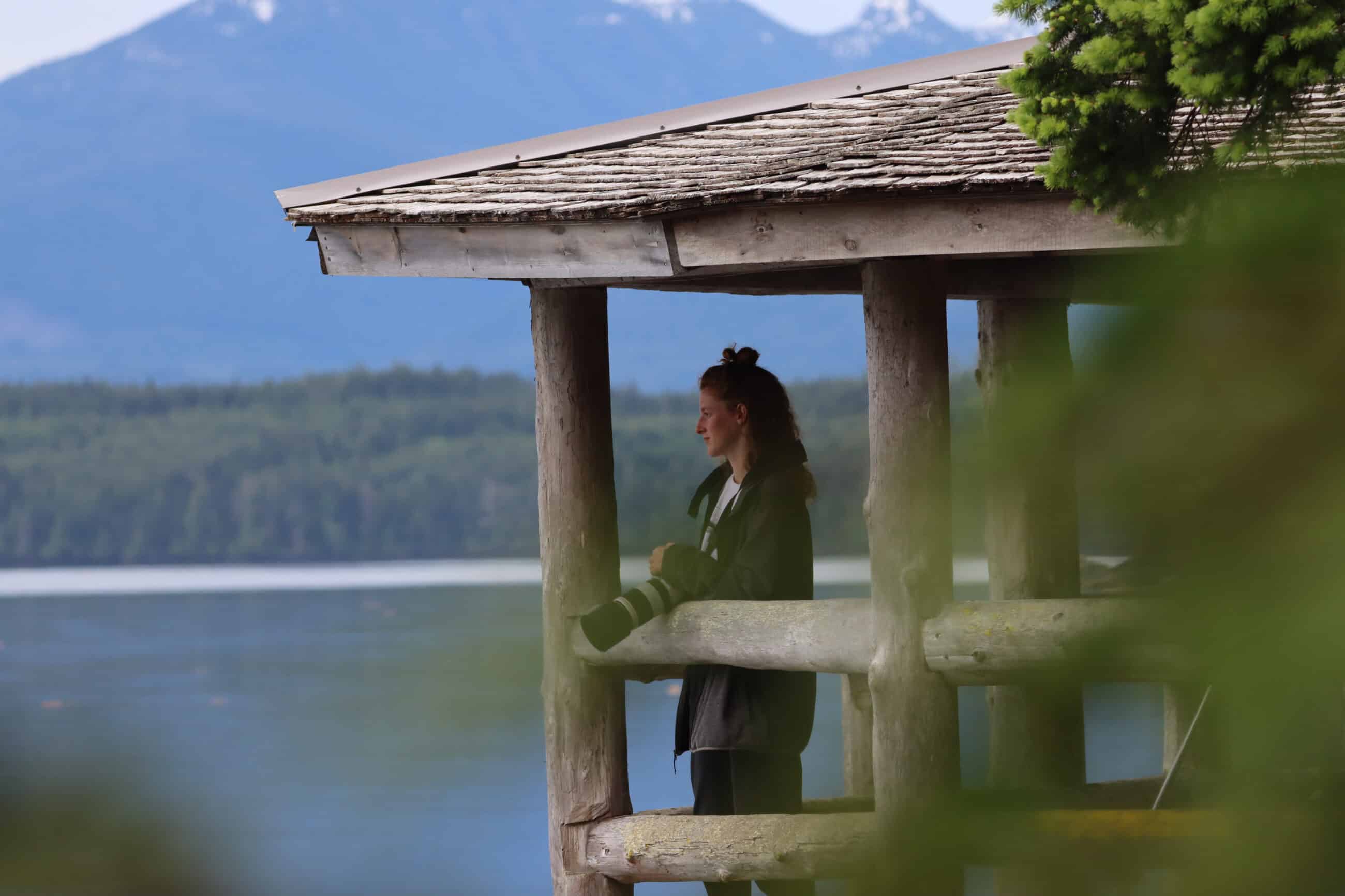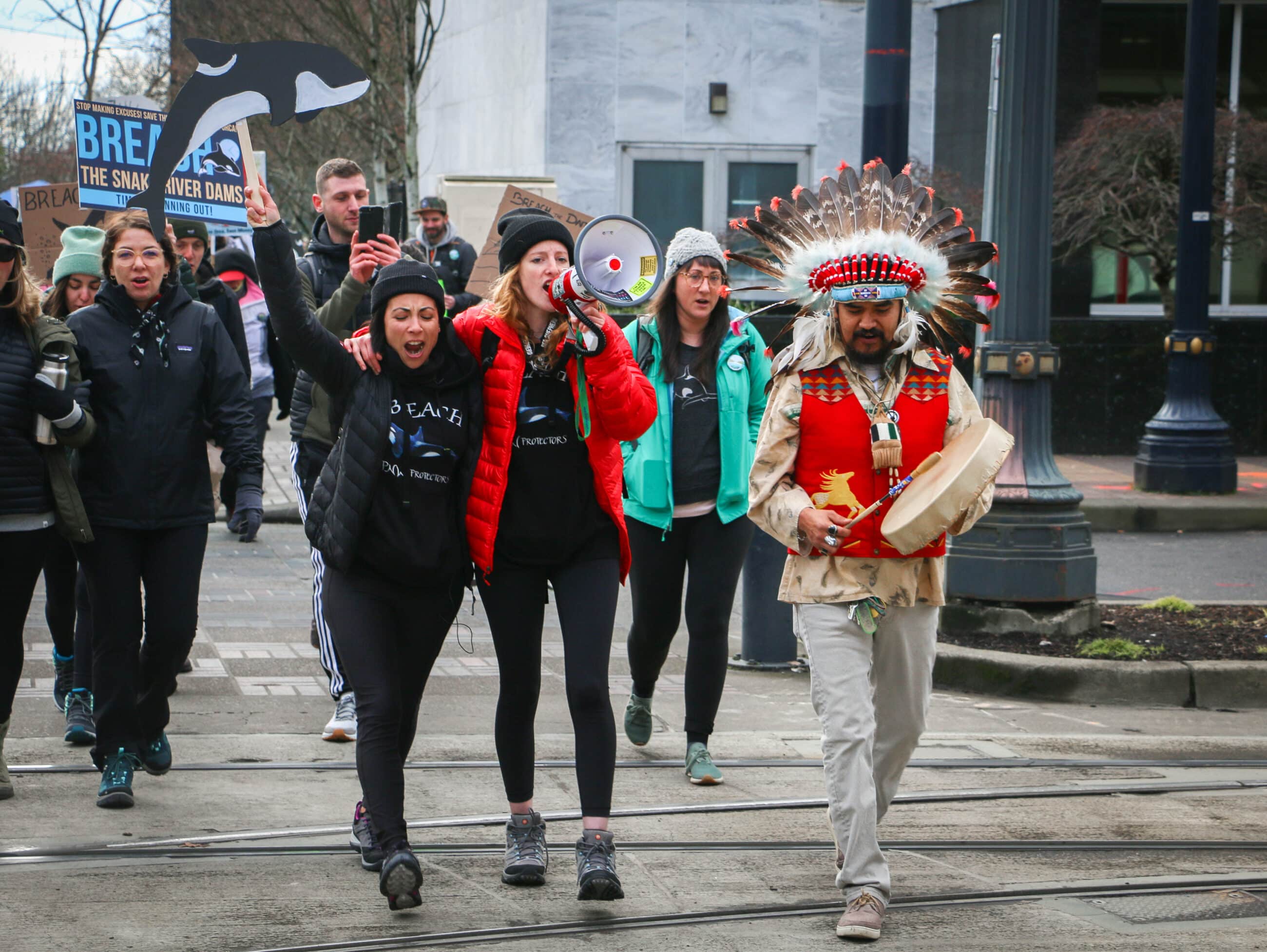Dr. Bronner’s is honored to be a key partner of Coextinction, the emotional and action-packed film that co-directors Gloria Pancrazi and Elena Jean created to inspire action and create change in the race to stop the extinction crisis in its tracks. With the story of the Southern Resident orcas and the threats to their survival at the film’s core, Dr. Bronner’s released a special “Protect Orcas!” soap label for the Canadian market in 2023. Shortly afterwards, Coextinction received distribution in countries all over the world, including in the U.S. on FuboTV, DirectTV UVerse, and Spectrum TV on the EarthX channel. We urge you to read Gloria Pancrazi’s heartfelt call to action below, and then watch Coextinction!
“Birds don’t make a plan to migrate … They feel a call in their bodies that they must go.” adrienne maree brown wrote this as an example of emergence in her book Emergent Strategy. That is how I feel about my relationship to creating the film Coextinction, and the calling I felt to protect the Southern Resident orcas from extinction.
I have loved orcas ever since I can remember. Something about them called to me and resonated deep inside my heart. I spent my childhood dreaming of their silken black fins coming up beside me in the lake I swam in, reading every book, and watching every documentary I could to better understand them. The way some children know, I knew what I wanted to do with my life: protect orcas. At eight years old, I was already advocating for their freedom from captivity; and giving speeches about their intelligence and more-than-human emotional depth in response to people trying to convince me they were dangerous beasts.
Did you know orcas have an entire part of their brain dedicated to empathy that we, humans, don’t have? This is one of the many facts about orcas that fascinated me.
The calling never faded, but it became especially strong when I graduated university. I began volunteering with organizations in the Pacific Northwest that were working to protect the Southern Resident orcas. Through that work, I got a crash course on the situation unfolding: the Southern Resident orcas were starving to death.
It broke my heart. I always thought orcas needed protection from captivity, I never thought that they were facing extinction in their ocean home. I had studied journalism, wanting to advocate for human and animal rights, but writing an article didn’t seem to accomplish enough. I wanted to create something that would create a long-term impact for these orcas. And that’s where the seed of Coextinciton was planted: what if I made a documentary?

I had seen the impact of storytelling and documentaries in films like Blackfish and Sharkwater. I felt a jolt of energy through my whole body. For the first few minutes, it felt exciting, and then very daunting. I had never made a film. Was this even possible? I remember going to see my dad and telling him about it. He said: “You can do it. You’re going to find a way to get funds. You’re going to get a team together. You’re going to drive across the country, lose gear, face challenges, and make mistakes. And it’s going to be amazing.” I told this to our team anytime we had setbacks.
I’d like to say that was the only moment of doubt that I felt while making Coextinction, but hardly. I cried, often: tears of grief, uncertainty, heartbreak, and exhaustion. I’m forever grateful to my partner, my friends, family, team, and community for holding me in times of doubts, heartbreak, and challenges.
Shortly after returning from monitoring the Southern Resident orcas on the ground with Cetus Research & Conservation Society, I met Elena Jean and asked her if she wanted to create this film with me. She had been working on raising awareness on the Southern Resident orcas and had been creating YouTube content about it. I loved her energy and passion for protecting wildlife, and for life. She said yes, and suddenly the dream felt a little more possible. I remember us sitting in a small cafe in Toronto, saying “We should try and make this as big as possible. Let’s make it a feature for Netflix.” (Spoiler: it didn’t end up on Netflix. But it is now streaming in Canada, the United States, Mexico, United Kingdom, and more.)
The next step was building our team: Andrew Luba and Nicholas Castel joined. Momentum was building. A few months later, our team expanded: Carolina Vitorino, Victoria Obermeyer, and many more joined. Organizations wanted to support the project any way they could. Locals were offering their house for us to stay in while we were filming. Hundreds of people donated to our crowdfunding campaign to produce the film. And so began a month-long journey through British Columbia and Washington State speaking with scientists, Indigenous leaders and youth, politicians, activists, whale watchers, fisherman, and more. We sailed on a Sea Shepherd ship with Alexandra Morton and Chief Ernest Alfred, seeing first-hand the impact of fish farms. We drove inland with Carrie Nightwalker Chapman and Jesse Nightwalker to the obsolete dams that displaced their people in 1959. We saw the impacts of the Trans Mountain pipeline on Indigenous communities along its route, and supported Will George in some of his actions to stop the pipeline construction.

All I could think about was protecting these orcas from extinction, and how it came down to the root cause of it: ongoing colonization in Canada and the United States. All the issues the Southern Resident orcas are facing are tied with Indigenous rights. By ongoing colonization, this includes the ongoing displacement of and legacy of violence against Indigenous people, but also refers to a way of life that centers extractive relationships with the land and all inhabitants.
The fish farms that are killing the orcas’ main food source – wild salmon – are operating on unceded lands and waters without the First Nations’ consent. While the farms offer economic opportunity, they are decimating the salmon populations that First Nations on the coast depend on physically, culturally, mentally, and spiritually. Many people we interviewed pointed out that the economic loss of losing wild salmon outweighed the economic benefits of fish farms. “The fish is all we have left. We can’t live here without our fish,” shared Ernest during a 284-day occupation of the Swanson Island fish farm.
The Trans Mountain Pipeline will increase tanker ship traffic sevenfold and put the Southern Resident orcas at risk of an oil spill and collisions. It also makes it increasingly difficult for the orcas to find their already declining food source, rest, communicate with one another, and reproduce. That same pipeline fuels the climate crisis by tripling oil piped from the Alberta tar sands in a critical time when we need to reduce our reliance on fossil fuels. That same pipeline threatens the lands, waters, salmon, and other animals the Tsleil-Waututh have ancestral connection with and rely on for food and ceremony. It was clear from speaking with Will George, land defender from Tsleil-Waututh Nation, and Kayah George, climate leader and matriarch-in-training from Tsleil-Waututh Nation, that the Trans Mountain Pipeline supports ongoing colonization of First Nations and infringes on their rights.
The lower Snake River dams kill millions of salmon every year, in a river that historically produced the most salmon in the Pacific Northwest. The Palouse People were forcefully removed from their lands for these dams to be built, and have fought ever since to return to their land. The dams also violate Tribal Treaty rights as they inundate traditional hunting, gathering, fishing and cultural sites.
The list goes on, and on, and on. The orcas continuously teach me that our collective liberation and healing are intertwined. Their wellbeing is connected to all of our wellbeing. I hope Coextinction helps people understand that.

I created this film from the bottom of my heart, and that meant more than simply storytelling. I took action, every chance I got. We ran campaigns, engaged our community to call politicians for the Snake River dams to be breached, fish farms removed, and pipeline stopped. We worked with Morgane Trussardi and organized a 320-km march from Portland to the Snake River Dams to bring national attention to the controversial dams. Fourteen days in, the pandemic forced us into a world-wide lockdown and we had to stop the march. I remember hugging Jesse Nightwalker, promising we’d be back as soon as the pandemic was over. It was the last time I ever saw him. He passed away a few months later.
Protecting the orcas taught me about injustices that run deep in Canada and the United States. It taught me about the ongoing impacts of colonialism that harms Indigenous people from coast to coast to coast. It also taught me about the hope that exists in community action, and the love that exists behind the grief we feel about these injustices. The orcas taught me that too: when the orca J35 carried her dead calf for 17 days, unable to let her baby go. Many felt she was showing the world what we had done to her child. Her family members carried her calf when she wasn’t able to.
The orcas are our teachers. I hope Coextinction can be part of your journey of listening, learning, feeling, and taking action for our collective wellbeing, justice and healing.
Watch Coextinction on their website and click on your country for more information.